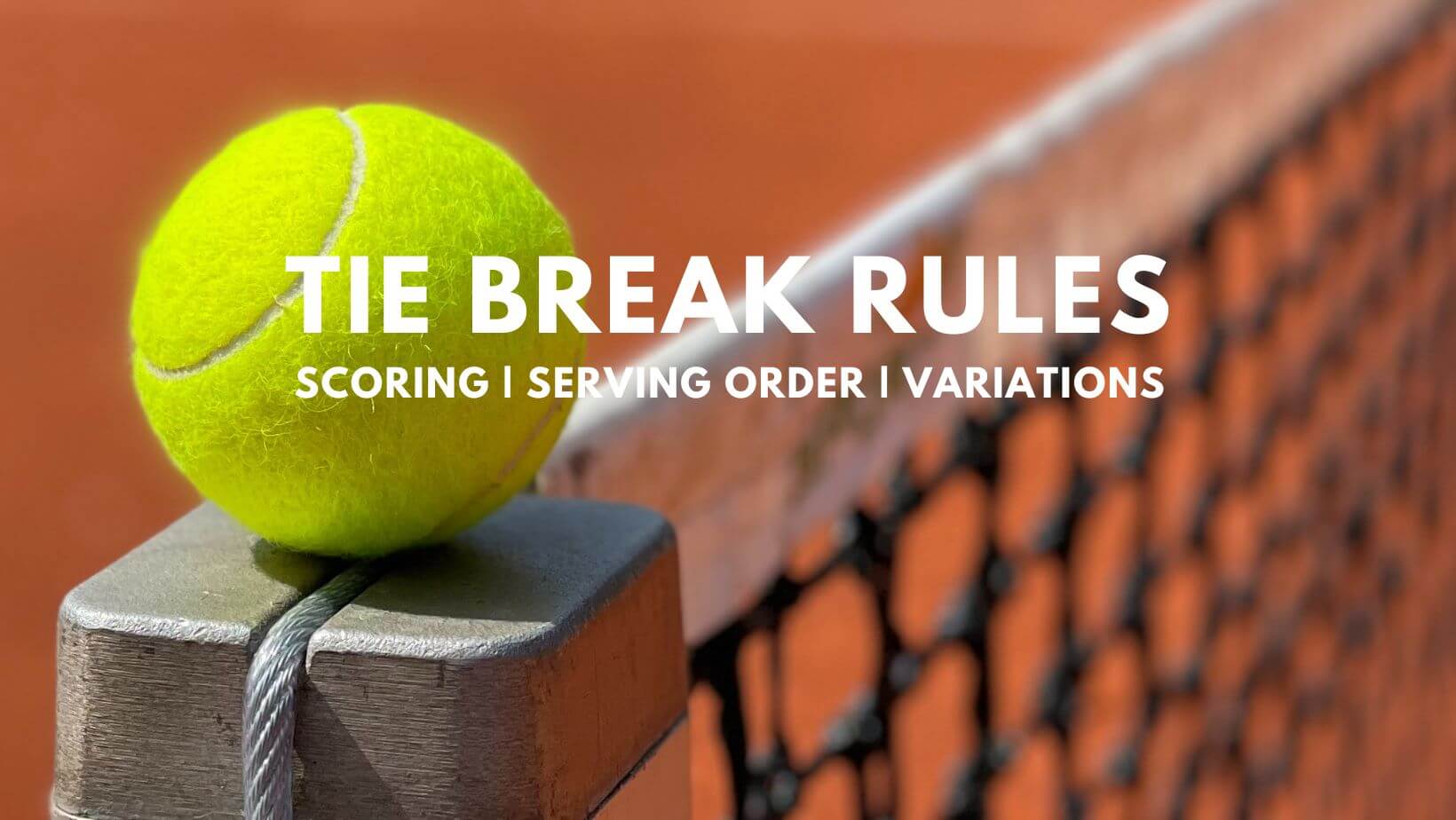Tiebreak Scoring Rules

Tennis tiebreak rules – Tiebreaks are used to decide a set in tennis when the score reaches 6-6. The player who wins the tiebreak wins the set. The tiebreak is played using a different scoring system than the rest of the set.
In the gripping final of the women’s Wimbledon final , the outcome hung in the balance as the players battled through a tense tiebreak. The unique rules of tennis tiebreaks, where players must win by two points, added an extra layer of drama to the match.
Each serve was met with a flurry of anticipation, as the players fought tooth and nail to gain the advantage. The tiebreak ultimately proved to be a crucial turning point in the match, as the eventual winner emerged victorious.
The tiebreak starts at 0-0. The first player to reach 7 points wins the tiebreak, provided they have a lead of at least 2 points. If the score reaches 6-6, the tiebreak continues until one player has a 2-point lead.
Scoring, Tennis tiebreak rules
The points in a tiebreak are counted as follows:
- 0 points: Love
- 1 point: 15
- 2 points: 30
- 3 points: 40
- 4 points: Game
The server serves from the deuce court (the right-hand court) for the first point. The receiver then serves from the ad court (the left-hand court) for the second point. The players then alternate serving for every two points.
Example
Here is an example of a tiebreak score:
- Player A wins the first point: 15-0
- Player B wins the second point: 15-15
- Player A wins the third point: 30-15
- Player B wins the fourth point: 30-30
- Player A wins the fifth point: 40-30
- Player B wins the sixth point: 40-40
- Player A wins the seventh point: 50-40
- Player B wins the eighth point: 50-50
- Player A wins the ninth point: 60-50
- Player B wins the tenth point: 60-60
- Player A wins the eleventh point: 70-60
- Player B wins the twelfth point: 70-70
- Player A wins the thirteenth point: 80-70
- Player B wins the fourteenth point: 80-80
- Player A wins the fifteenth point: 90-80
- Player B wins the sixteenth point: 90-90
- Player A wins the seventeenth point: 100-90
Player A wins the tiebreak 100-90.
In tennis, tiebreak rules dictate the resolution of close sets, ensuring a definitive winner. While the rules may seem straightforward, they hold historical significance, mirroring the evolution of the game. Just as the king of spain holds a rich lineage, tennis tiebreak rules have undergone their own journey, shaping the competitive landscape of the sport.
Strategies for Winning Tiebreaks: Tennis Tiebreak Rules

Tiebreaks can be a nerve-wracking experience, but with the right strategies, you can increase your chances of coming out on top.
Serve and Volley
Serving and volleying is a highly effective strategy in tiebreaks. It allows you to take control of the point and put pressure on your opponent. When serving, aim for deep and accurate serves to force your opponent to hit a weak return. Once you have hit your serve, quickly move to the net and volley the return. This will give you the advantage and make it difficult for your opponent to pass you.
Deep Groundstrokes
Hitting deep groundstrokes is another key strategy for winning tiebreaks. Deep groundstrokes will force your opponent to hit a weaker shot, giving you the opportunity to put the ball away. When hitting groundstrokes, focus on hitting the ball with topspin and depth. This will make it difficult for your opponent to attack and will give you more time to set up your next shot.
Consistency
Consistency is essential in tiebreaks. Avoid making unforced errors and focus on hitting the ball deep and with control. Every point counts in a tiebreak, so it’s important to stay focused and make as few mistakes as possible.
Handling Pressure
Tiebreaks can be a pressure-packed situation, but it’s important to stay calm and composed. Take deep breaths and focus on one point at a time. Don’t get discouraged if you lose a few points, and don’t let the pressure get to you. Just keep fighting and give yourself a chance to win.
Notable Tiebreaks in Tennis History
Tennis has witnessed several memorable tiebreaks that have left an indelible mark on the sport. These intense and nerve-wracking encounters have often decided the fate of crucial matches, adding to the drama and excitement of the game.
Wimbledon 2008 Final: Nadal vs Federer
One of the most iconic tiebreaks in tennis history occurred in the 2008 Wimbledon final between Rafael Nadal and Roger Federer. With the match tied at 6-6 in the fifth set, the two legends engaged in a thrilling tiebreak that lasted for 22 minutes. Federer eventually prevailed 9-7, securing his sixth Wimbledon title. The tiebreak featured exceptional shot-making and intense rallies, showcasing the incredible skill and determination of both players.
Australian Open 2012 Semifinal: Djokovic vs Murray
Another unforgettable tiebreak took place in the 2012 Australian Open semifinal between Novak Djokovic and Andy Murray. With the match tied at 4-4 in the fifth set, the two players battled it out in a tiebreak that lasted for 31 minutes. Djokovic ultimately emerged victorious, winning the tiebreak 12-10 and securing his place in the final. The tiebreak was characterized by long and grueling rallies, testing the endurance and mental strength of both players.
US Open 2019 Final: Osaka vs Andreescu
The 2019 US Open final between Naomi Osaka and Bianca Andreescu featured a dramatic tiebreak in the second set. With Osaka leading 6-5 in the set, the two players engaged in a tense tiebreak that saw several momentum swings. Andreescu eventually won the tiebreak 7-5, leveling the match at one set apiece. The tiebreak showcased the aggressive play and determination of both players, highlighting the importance of maintaining focus and composure in high-pressure situations.